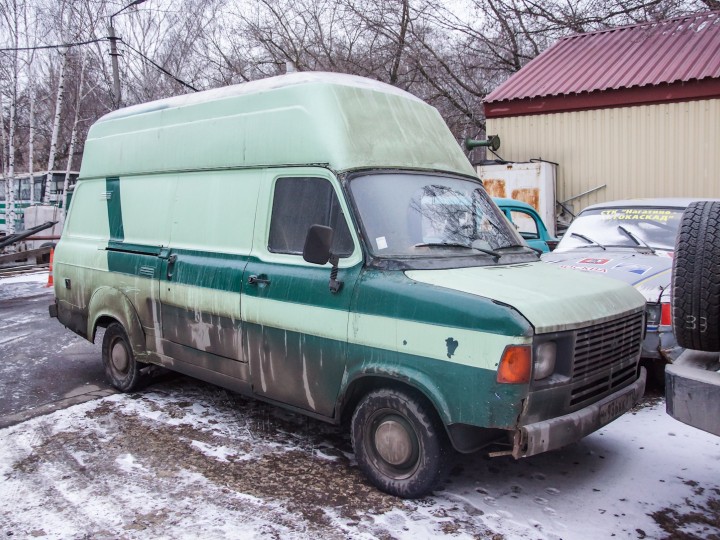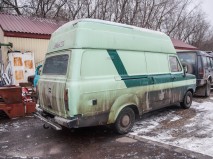1978 Ford Transit
The Transit was a departure from the European commercial vehicles of the day with its American-inspired styling—its broad track gave it a huge advantage in carrying capacity over comparable vehicles of the day. Most of the Transit's mechanical components were adapted from Ford's car range of the time. Another key to the Transit's success was the sheer number of different body styles: panel vans in long and short wheelbase forms, pick-up truck, minibuses, crew-cabs to name but a few.
In March 1978, a facelifted version, commonly known in some markets as the Transit Mark II, debuted with a restyled nose section, lifted from the US third generation Econoline, new interior, and the introduction of the Pinto engine from the Cortina in place of the Essex V4. Many fleet owners experienced premature camshaft wear in early Pinto units in the Cortina and for two years the Transit 75 was available with the 1.6 L Ford Kent cross-flow engine. High-performance versions intended for police or ambulance use used the 3.0 L V6 version of the Essex engine, Australian variants had 4.1 L (250 cu in) inline 6-cylinder engines.
The Mark II was available in 6 body styles: Van, Kombi, Chassis Cab, Parcel Van, Bus and Crewbus all available in short-wheelbase (2690 mm) and long-wheelbase (3000 mm) versions. A selection of 5 engines was available: 1.6-litre OHC Petrol, 1.6-litre OHV Petrol (Kent), 2.0-litre OHC Petrol, 2.0-litre OHC Petrol (Economy) and 2.5-litre Diesel. In late 1982 a four-wheel drive version was added to the German market. This was developed together with a Ford dealer in Stuttgart. The 4x4 Transit was later offered in other markets as well.









